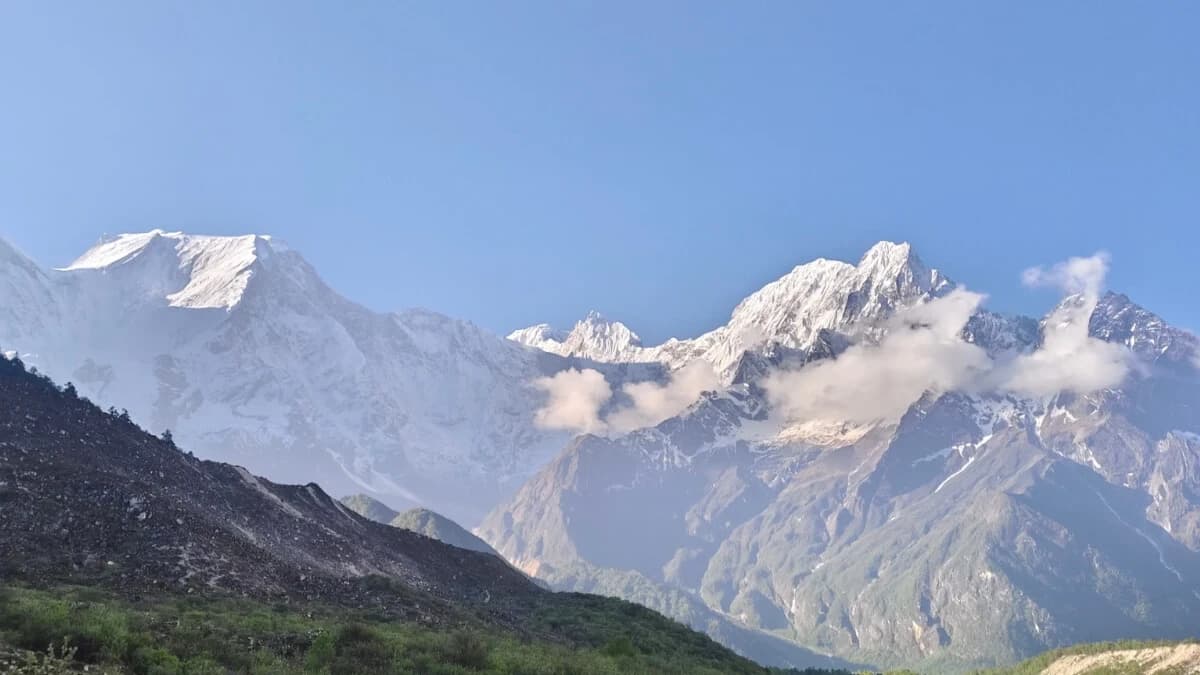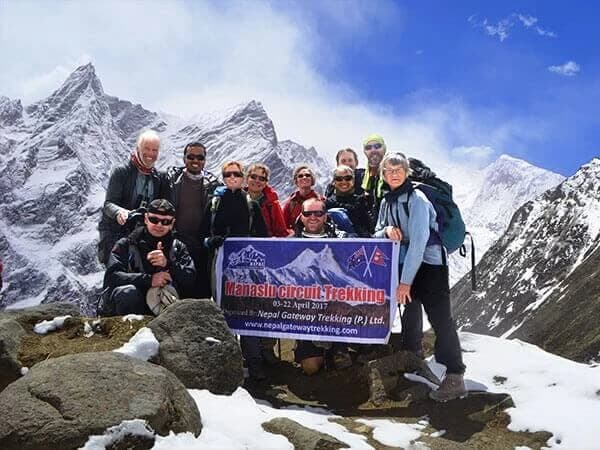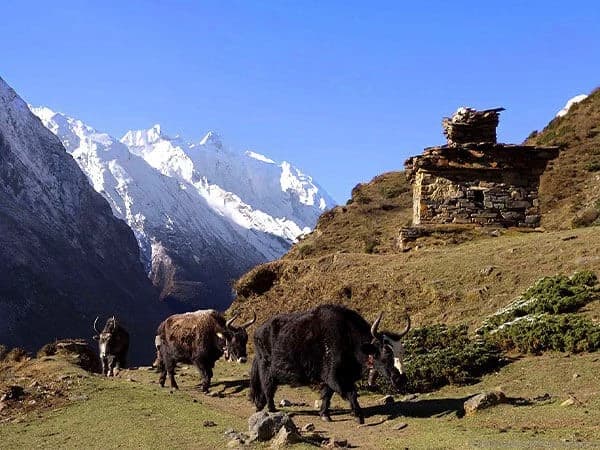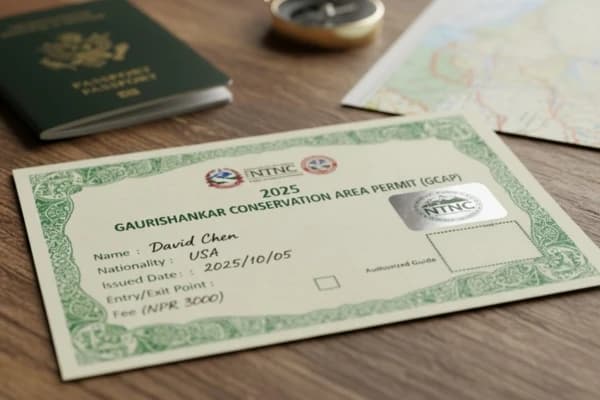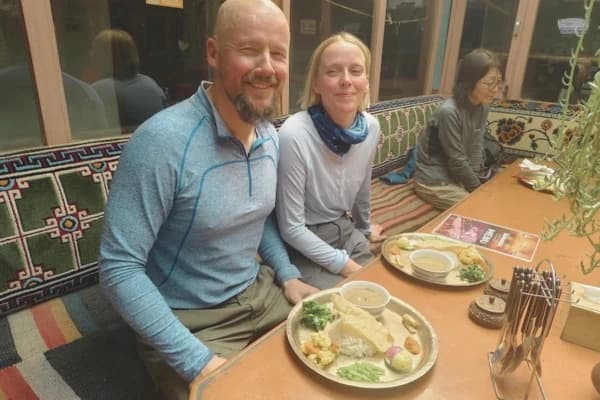Mount Manalu is one of Nepal’s highest peaks (8th), standing tall at 8,163 meters, giving a spiritual vibe to the region. As the word Manaslu comes from the Sanskrit word Manasa, it holds an intellectual reflection of the mountain's spiritual resonance.
But beyond its height and name lies a dual identity. A sacred trekking region surrounded by Tibetan culture and a dangerous yet alluring mountaineering challenge for elite climbers.
Whether you're a trekker seeking raw Himalayan beauty or a climber chasing the summit of one of the world’s deadliest 8000ers, Manaslu is a serious challenge that requires careful planning and respect for the mountain.
Where is Mount Manaslu Located?
Mount Manaslu is located in north central Nepal, within the Gorkha District, and is part of the Mansiri Himal subrange of the Nepalese Himalayas. It lies just east of the famed Annapurna range and close to the border of Tibet.
The mountain's isolation keeps the mysterious vibe for trekkers. Your Trekking route begins from Arughar or Machha Khola and follows the Budhi Gandaki river going upstream toward the Manaslu base. After circling the massif via the Manaslu Circuit Trek, you will connect with remote villages like Samagaun and Lho, where you will pass through stunning gorges and high-altitude valleys.
Geographical & Geological Overview
Mount Manaslu is a majestic peak that holds geological significance as it offers a glimpse into the Earth's tectonic plates' history. This showcases some of the highest and most beautiful mountain landscapes in the world.
Location and Mountain Range
Mount Manaslu stands as the crown jewel of the Mansiri Himal, which is part of a larger Himalayan range. It is surrounded by multiple high peaks like the Himalchuli at 7,893 meters, and Ngadi Chuli at 7,871 meters forming a high apline wall.
Geological Formation
Mount Manaslu was formed when the Indian and Eurasian tectonic plates crashed together, pushing up rock layers to create the towering Himalayas we see today.
Climate on Manaslu
The climate on Mt. Manaslu is harsh and ever changing. You can expect a temperature drop of below zero even in climbing seasons, with frequent snowfall, high winds, and whiteouts above the 6,000 meters.
Which is why the optimal season to ascent the mountain would be spring (March to May) and Autumn (September to November) as these two seasons offer the most stable weather.
Other Major Peaks
Mount Manaslu has several peaks that are above the altitude range of 6,000 meters, which adds to the region's breathtaking scenery and challenges the climbers even more. Some notable ones are:
- Himalchuli: 7,893m
- Ngadi Chuli (Peak 29): 7,871m
- Baudha Himal: 6,672m
Manaslu Conservation Area
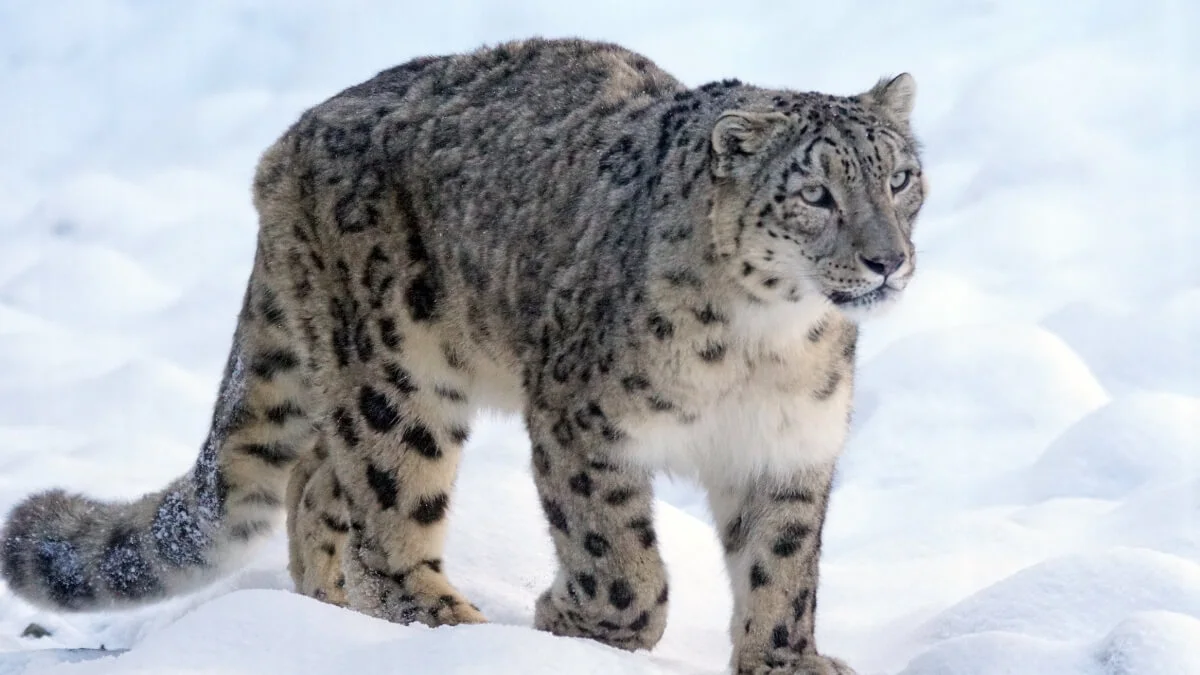
Established by the NTNC (National Trust for Nature Conservation), Manaslu Conservation Area spans over 1,600 square kilometers. It was mainly created to protect the Himalayan biodiversity and creating a sustainable eco-system for tourism purpose.
Trekkers will need an MCAP permit as well as a TIMS card to enter these conservation areas, which also funds the project. Here you will witness many things along the way, like:
- Endangered wildlife like the snow leopard, Himalayan musk deer, and red panda
- Tibetan-influenced villages, Buddhist monasteries, and ancient salt trade routes
- Rare alpine plants, rhododendron forests, and glacial valleys
Flora and Fauna on Mount Manaslu
Mount Manaslu's uneven elevations support a varied range of ecosystems with a dense flora and fauna. This ecological diversity makes the region a sanctuary for rare plant and animal species.
- Flora: Blue pine, juniper, rhododendron, and Himalayan birch dominate the forested zones.
- Fauna: The area is home to elusive snow leopards, rare red pandas, Himalayan tahr, langurs, and soaring golden eagles.
Ethnic Groups and Culture on Manaslu
The communities surrounding Mount Manaslu are primarily Tibetan-descended groups, such as the Nubri and Tsum people. Their culture is deeply rooted in Tibetan Buddhism, evident in prayer flags fluttering across the landscape, mani walls, stupas, and centuries-old monasteries like Pungyen Gompa.
- Language: Various Tibetan dialects are spoken in the region.
- Festivals: You could find yourself in major celebrations like Losar, Mani Rimdu, and local harvest festivals if you time it right
- Hospitality: Visitors are warmly welcomed with traditional yak butter tea and genuine respect, reflecting the locals’ deep-rooted hospitality.
Are you thinking of exploring Manaslu, not just by reading it in some blogs? If your answer is yes, Nepal Gateway Trekking is here to make your dream come true. Reach us to know about Manaslu Trekking experience and everything.
History of Mount Manaslu Expeditions
The climbing history of Mount Manaslu starts with the first ascent being made by japanese expedition team in 1956, even though the frist mountainerring journey was done by a British team around 1950. Since then the mountain has seen a lot of ascents and achievements.
First Ascent & Japanese Expeditions
The first reconnaissance of Manaslu was carried out by a British team in 1950. Japanese climbers soon took a keen interest and attempted the mountain multiple times in the early 1950s. Their 1954 attempt was blocked by local opposition.
But after resolving tensions, the 1956 Japanese expedition led to the first successful ascent on May 9, 1956, by Toshio Imanishi and Gyalzen Norbu. A second summit followed two days later. This continued through the 1950s and 60s, as the Japanese expedition group continued making regular ascent to Mt. Manaslu, making it one of their signature 8,000er to conquer.
Milestones and Fatalities
By December 2024, Manaslu had seen approximately 3,317 successful summits and around 90 fatalities, resulting in a 2.7% fatality rate. Most of the deaths were caused by avalanches, falls, or altitude-related illnesses, with autumn and spring seasons being the most dangerous.
Memorable Records and Ski Descents
- Adrian Ballinger completed a fast summit using supplemental oxygen and made a partial ski descent.
- Benedikt Böhm descended on skis from the summit to base camp without oxygen.
- Jost Kobusch gained recognition for solo and winter no-oxygen attempts.
- Hilaree Nelson and Jim Morrison skied from the true summit in 2018, marking a milestone in ski mountaineering.
Why Mount Manaslu is Called the 'Killer Mountain'?
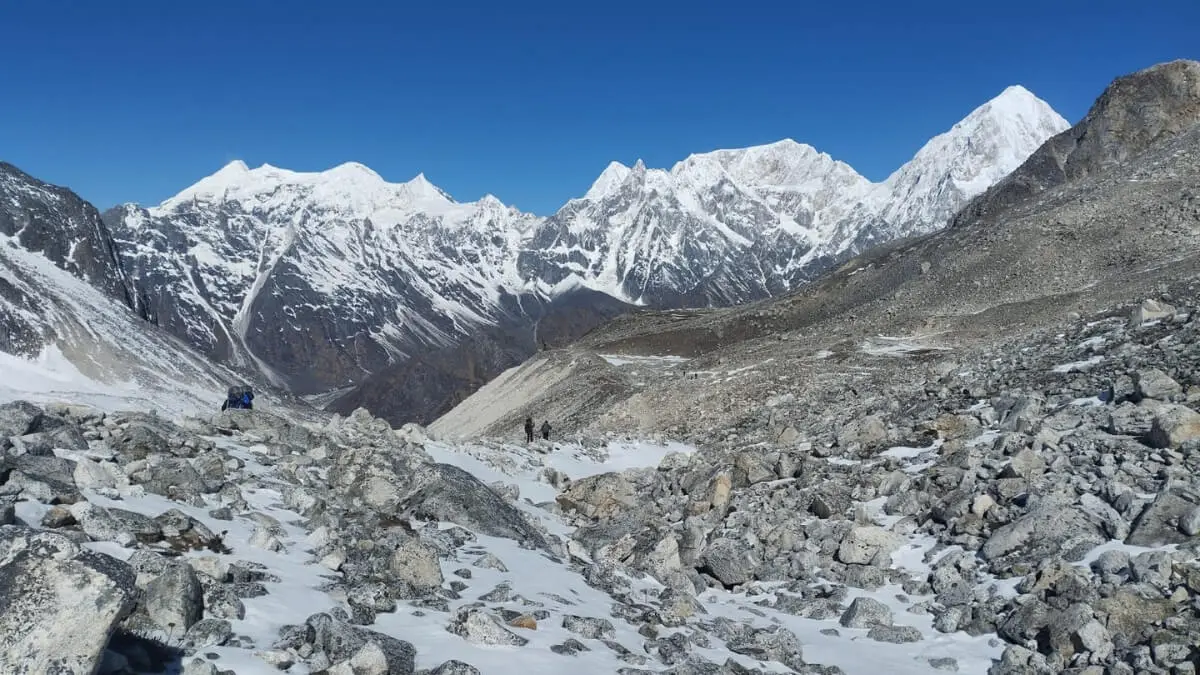
Mt. Manaslu, despite being lower than the Everest, and having lower fatality rate than one of the most dangerous mountains Annapura I, has earned the nickname "Killer Mountain". The deceptive conditions of the cilmbing route and and history of fatalities make this one fo the dangerous mountains to climb.
- Fatality Rate: Around 2.7% of climbers have died attempting Manaslu, making it one of the deadlier 8000m peaks.
- Risks: Avalanches, falling ice blocks, and a dangerous overhanging snow edge near the summit make it more risky.
- False Summit Trap: Many climbers stop prematurely at the false summit, unaware of the sharp and unstable hardened snow ridge hanging above their heads that could fall at any time.
New Rules to minimize fatality rates in Mount Manaslu
To improve safety, Nepal has implemented strict regulations that must be followed at all times so that dangerous, unknown mishaps don't happen at all, even though the journey itself is daunting.
- Mandatory licensed guides and climbing permits ensure experienced leadership.
- Limited seasonal summit windows help avoid the most hazardous weather periods.
- Route fixing and rescue readiness are strictly enforced to assist climbers take the safest avilable routes and be available for contact incase there is a need for evacuation.
Trekking Route: Manaslu Circuit Trek
The Manaslu Circuit Trek offers stunning Himalayan views combined with rich cultural experiences among Tibetan-origin communities.
This trekking journey for you will be mystical as you will be going through a diverse landscapes and traditional villages where you can immerse yourself in the unique local customs.
Route Highlights:
- Starts from Arughat or Soti Khola, following the Budhi Gandaki River valley
- Passes through lush rhododendron forests and alpine meadows
- Visits ancient Mani walls, prayer flags, and Pungyen Gompa monastery
- Encounters Nubri and Tsum communities with Tibetan Buddhist traditions
- Experience local festivals like Losar and Mani Rimdu
- Stay in welcoming homestays and teahouses offering authentic hospitality
Best Seasons to Trek and Climb Mount Manaslu
Spring (March to May) is the best season for climbing Mount Manaslu as the weather is relatively stable, snow conditions are more predictable, and the days grow warmer as the season progresses. Climbers favor this period for its safer summit conditions and well-established expedition infrastructure.
Whereas Autumn (September to November) is ideal for trekking as this season offers a clear view of the Himalayas, and the weather is dry and stable, making it perfect for a long trekking journey. One other benefit would be that the season aligns with some of the local festivals, which will add a lot of cultural depth to your journey.
If you are thinking of Manaslu Circuit Trek, knowing the best time for Manaslu Circuit Trek is important.
Permits, Visa & Legal Requirements
To enter Nepal for different activities, except Indian nationals everyone must obtain a Nepal tourist visa, available on arrival at Tribhuvan International Airport or online.
As for the Manaslu region, you will need these permits(mandatory):
- Restricted Area Permit (RAP)
- Manaslu Conservation Area Permit (MCAP)
- Annapurna Conservation Area Permit (ACAP)
- TIMS card (for trekkers only)
Costs: Trek vs Climb Comparison
|
Feature |
Manaslu Trek |
Manaslu Climb |
|---|---|---|
|
Permits |
~$200-300 |
$500+ climbing permit |
|
Lodging/Food |
$20-35/day |
Included in expedition package |
|
Guide/Porter |
$25-40/day |
Included (Sherpas, cooks, logistics) |
|
Total Budget |
$1,200-2,000 |
$10,000-16,000+ |
Climbing Route: Base Camp to Summit
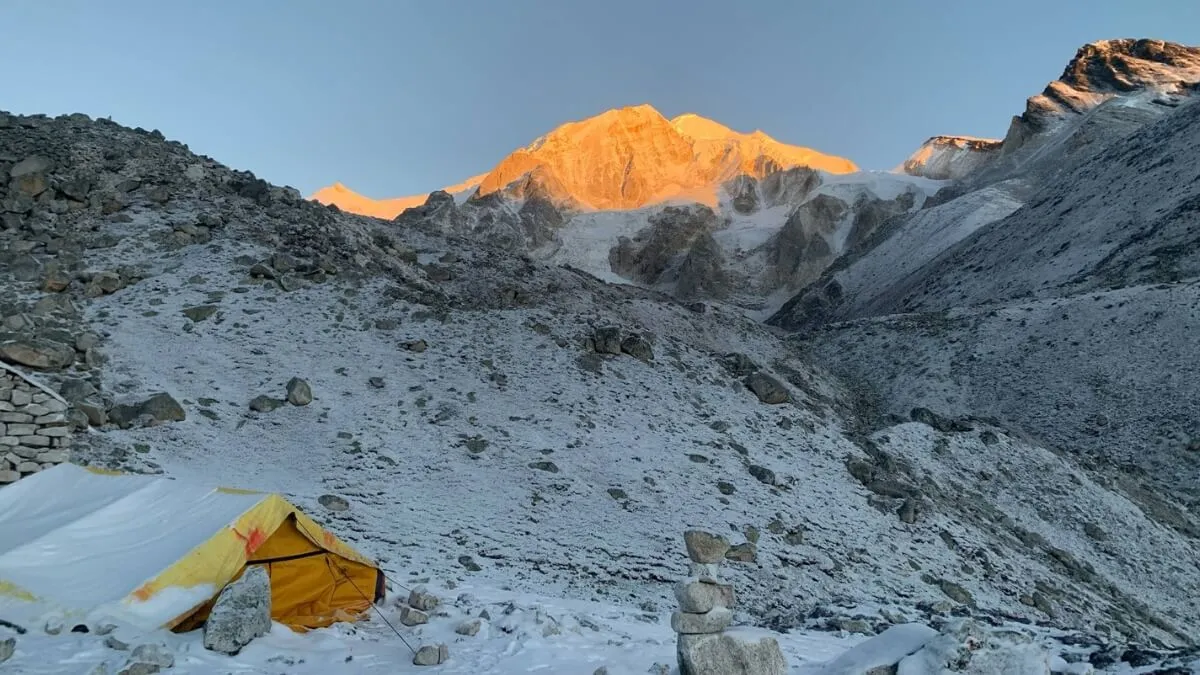
The standard ascent of Mount Manaslu follows the Northeast Face Route, beginning at Base Camp and progressing through four high camps before the summit push.
Technical Difficulty & Summit Ridge Cornice
Climbers face steep glacier crossings with hidden crevasses throughout the route. At the summit, ridge features an exposed cornice that is both narrow and unstable, posing a significant hazard, especially near the false summit.
- Steep glacier crossings
- Hidden crevasses
- Exposed cornice at summit ridge (false summit hazard)
Camp I-IV Camps Overview with Altitudes
The ascent to Mount Manaslu’s summit goes through four high camps where each camp presents unique challenges and risks, progressively preparing climbers for the final summit push.
- Camp I (5,600m) - crevasse risk
- Camp II (6,300m) - avalanche-prone
- Camp III (6,800m) - cold, steep terrain
- Camp IV (7,400m) - summit push
Recommended Climbing Season & Weather Windows
The best climbing periods are May and early October, when the weather tends to be more stable. Climbers should monitor for persistent high-pressure systems, which bring clearer skies and safer conditions.
- May & early October are ideal
- Monitor for stable high-pressure systems
Recommended Trek: Manaslu Circuit Tsum Valley Trek - 23 Days
What are the Dangers & Hazards on Mount Manaslu?
Despite being one of the more accessible 8,000-meter peaks, Mount Manaslu presents serious risks that requires caution and preparation all the more.
Climbers and trekkers alike must be aware of the natural dangers, altitude-related illnesses, and route-specific challenges that have led to numerous fatalities over the years.
- Unpredictable Weather: Sudden whiteouts, snowstorms, and high winds are common, especially above base camp.
- Avalanches and Serac Falls: Particularly dangerous after fresh snowfall or during warming periods.
- Altitude Sickness: AMS, HAPE, and HACE become real threats above 4,000 m, especially with rapid ascent.
- Summit Ridge Risk: Narrow overhanging snow and confusion between the foresummit and true summit has been the cause for many of the fatalities.
Preparation & Safety Considerations
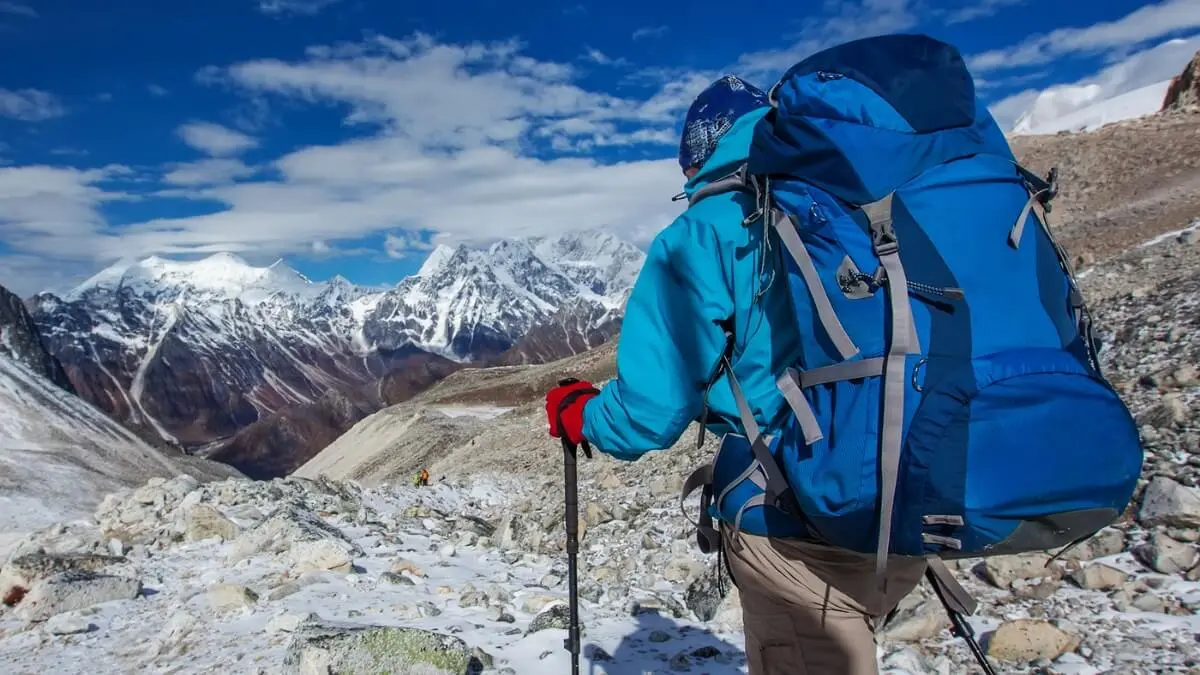
Climbing Mount Manaslu demands not just technical readiness but also physical resilience and careful planning. Whether you're a seasoned mountaineer or attempting your first 8,000er, thorough preparation can significantly reduce risks and improve summit success.
- Training: Begin 3-6 months in advance, focusing on cardiovascular fitness, strength training, and high-altitude endurance.
- Gear: Essential items include crampons, ice axe, climbing harness, down suit, oxygen system, and layered clothing for extreme cold.
- First Aid Kit: Must include altitude meds like Diamox and dexamethasone, along with antibiotics, painkillers, bandages, and gauze.
- Hydration & Acclimatization: Stay hydrated and follow a gradual ascent plan with scheduled rest days to allow the body to adapt.
- Sherpa Support: Critical for fixing ropes, carrying loads, setting camps, and ensuring safety on technical sections.
Who are the Sherpa?
The Sherpa are an ethnic group native to the eastern Himalayas in Nepal. They are renowned for their natural adaptation to high altitudes as they play a vital role in Himalayan mountaineering. From route setting, to loading carrying, and altitude safety make them one of the main reasons for the success and survival of many climbing expeditions.
Acclimatization Tips for Mount Manaslu | Responsible & Sustainable Trekking
Proper acclimatization is essential for avoiding altitude sickness and ensuring a safe ascent. Follow the “climb high, sleep low” rule, take regular rest days, and allow your body time to adjust gradually as you gain elevation. Staying well-hydrated and getting plenty of rest are key to successful acclimatization.
To help preserve the fragile environment and support local communities:
- Carry-in, carry-out: Do not litter and pack out all waste, including plastics and wrappers.
- Support local economy: Hire local guides, porters, and stay in community-run lodges or teahouses.
- Respect local culture: Dress modestly, avoid loud or disruptive behavior, and always ask permission before taking photos.
Summary
Mount Manaslu offers two unforgettable paths, a challenging high-altitude trek and a technically demanding climb. Both require preparation, cultural respect, and an understanding of nature’s unpredictability.
Ready to take on Manaslu?
Explore our Manaslu Region Trekking & Expedition Packages for your next trek.
Contact Nepal Gateway Trekking — licensed guides, local expertise, and personalized service.
Traveller’s Queries on Mount Manaslu
What is the hardest part of climbing Mount Manaslu?
The summit ridge is narrow, exposed, and features dangerous cornices that require careful navigation. High altitude above 7,000m adds fatigue and risk.
How many people have died climbing Manaslu?
Approximately 90 climbers have lost their lives, mostly due to avalanches, falls, and sudden severe weather during the ascent.
Can beginners trek the Manaslu Circuit?
Beginners with moderate fitness can trek with an experienced guide, but it’s not recommended for those new to high-altitude trekking.
Are permits required for trekking and climbing Manaslu?
Yes, trekking requires permits like RAP, MCAP, and ACAP, while climbing demands a special climbing permit and a licensed guide.
Do you need supplemental oxygen to summit Manaslu?
Supplemental oxygen is optional but strongly recommended above 7,000 meters to improve safety and performance on the summit push.
When is the best time to climb Manaslu?
The best climbing seasons are May and early October when weather conditions are most stable and avalanche risks are lower.
What’s the difference between the false summit and the true summit?
The false summit is a misleading snow ridge where climbers often stop; the true summit lies beyond a narrow, dangerous cornice.
How should I acclimatize while trekking/climbing?
Acclimatize by ascending slowly, drinking plenty of fluids, and scheduling rest days above 3,000 meters to avoid altitude sickness.
What are the most common risks on the Manaslu expedition?
Main risks include altitude sickness, avalanches, extreme weather, and unstable terrain, especially near the summit ridge.
How much does a Manaslu climb cost compared to trekking?
Trekking generally costs $1,200 to $2,000, while climbing expeditions can range from $7,500 up to $16,000 or more depending on services.
